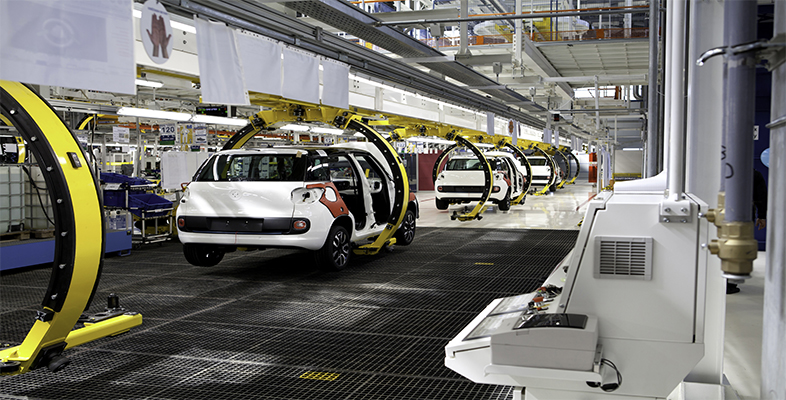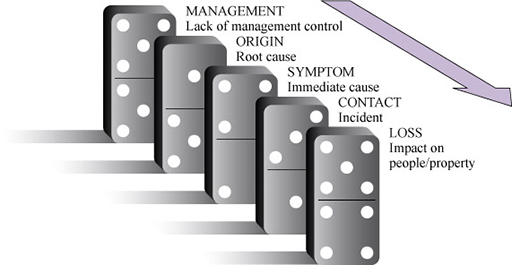2.3 Analysing ‘incidents’
You have seen that there may be many causes that contribute to an incident, and that investigators often have to look at many interlinked issues that may have led to an accident. These issues include the failure of management controls relating to human factors, job factors or event component failure. There may also be a lack of knowledge, skills or training among the people involved, or there may be inadequacies in work standards, design, maintenance, and so on. The sequence of ‘soft’ events that can lead to an incident occurring has been likened to a ‘domino effect’, as illustrated in Figure 6.
You are in fact considering what the ‘causes’ of accidents are. With a wide variety of factors having a knock-on effect, it is clear that it is essential to address possible failures at any level. You have already learned that many interlinking factors may result in accidents, so you may need to think about multiple causes that look relatively small in isolation but have the capacity to contribute to a much larger incident. Note that the domino model implies that there is a single pathway to failure – in reality, many situations are more complex, with several potential pathways that could lead to an accident.
What is your understanding of ‘cause’ in the context of accidents?
The Oxford English Dictionary (2016) defines a ‘cause’ as both a noun and a verb:
A person or thing that gives rise to an action …
Make (something, especially something bad) happen.
The idea of different causes is illustrated in the following case study.

